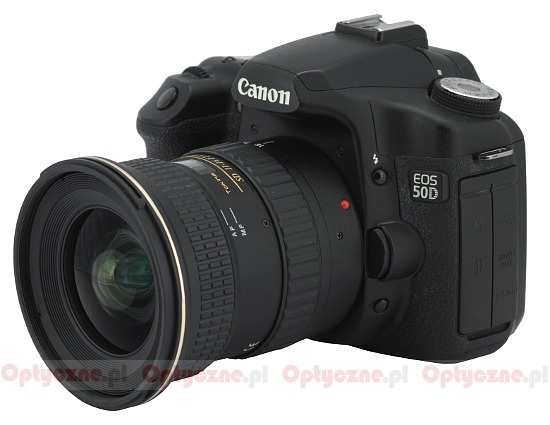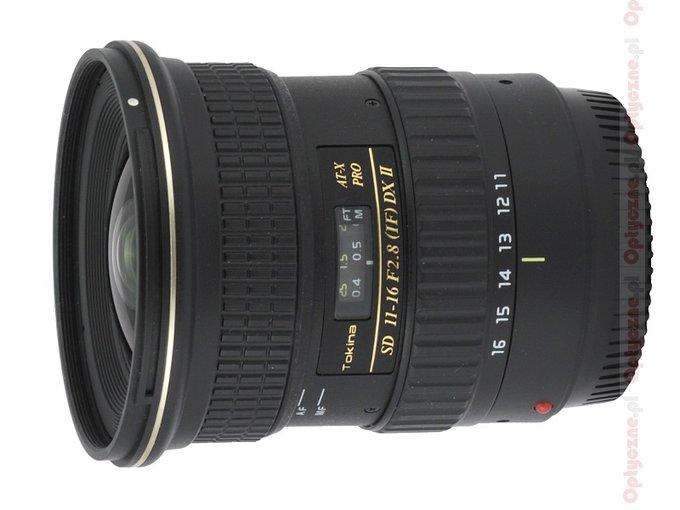Tokina AT-X 116 PRO DX II AF 11-16 mm f/2.8
1. Introduction
In January 2012 Tokina decided to introduce a successor of that lens. One glance at the chart with parameters and you know that hardy anything was changed; the weight of those instruments seems to be the only noticeably different feature.
What justifies the II symbol in the name of the new device? The producer claims that the anti-reflective coatings have been improved. Still does such a change really justify a launch of a new version and a new test procedure? Yes, it does. First of all new coatings might suggest a better performance against bright light and it was one of the biggest issues of the previous version of this instrument. It is not all. The resolution, as measured by us, is, in fact, the MTF50 function value and it is not only sensitive to the number of details but also to the overall contrast of a photo, which is influenced by the coatings of a given device. Following this train of thought you can say that a good choice of coatings is very important when it comes to a wide angle lens; in such an instrument the beams of light fall at obtuse angles to the elements and it is known that the efficiency of coatings decreases along with the increase of the angle of a light beam. Improving the coatings can influence not only work against bright light but also the MTFs or vignetting. When better coatings are implemented the corners of the detector get more light.
Please Support UsIf you enjoy our reviews and articles, and you want us to continue our work please, support our website by donating through PayPal. The funds are going to be used for paying our editorial team, renting servers, and equipping our testing studio; only that way we will be able to continue providing you interesting content for free. |
- - - - - - - - - - - - - - - - - - - - - - - - - - - - - - - - - - - - - - - - - - - - - - - -
There is one more argument for repeating the test of the Tokina 11-16 mm: the old model of that lens was tested on the Canon EOS 20D in 2008. Nowadays many people use far more densely packed sensors - their resolutions can oscillate from 12 to 24 Mpix. The Canon EOS 50D which we currently employ in our tests, will be a better tool to assess the performance of a new lens as it is more likely to be attached to one of contemporary digital cameras.
You shouldn’t forget one more thing. The Tokina 11-16 mm f/2.8 still remains the fastest ultra wide zoom lens, designed for smaller sensors – small wonder we’ve got plenty of queries about the test of its new version. As we always try to take wishes and questions of our Readers into consideration, we are publishing this review – enjoy your reading!
We would like to thank the Delta company, the sole distributor of the Tokina brand name lenses in Poland, for lending us the tested lens.
You are also invited to get acquainted with our test procedure, described in the article "How do we test lenses?" If you feel it’s still not enough, please go to our FAQ section where you can find some further explanation.
 |







